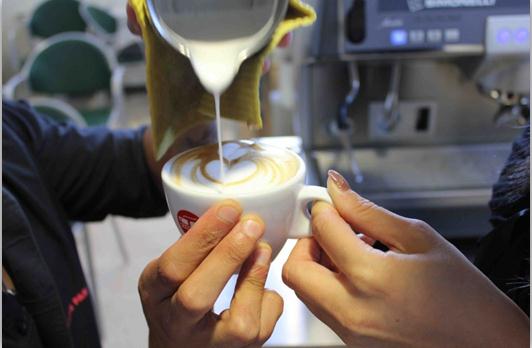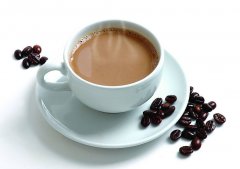How to taste coffee? Fragrant, sweet, mellow, astringent, bitter and sour
How to taste coffee, taste a cup of coffee actually from the fragrant, sweet, mellow, astringent, bitter, sour six aspects.
Tasting coffee 1. Incense
Inferior quality: industrial flavor smell, rotten taste
Quality: pure coffee aroma
Tasting tips: fancy coffee generally can not smell the original smell of coffee, because the strong milk or chocolate flavor often masks the aroma of coffee. In addition, the smell of coffee should be hot.
Tasting coffee 2. Gan
Poor quality: dry aftertaste
High quality: the feeling of giving birth to a full mouth
Tasting tricks: in fact, according to the different coffee beans, coffee can be divided into light and heavy, there is no good or bad, only depends on personal preferences. But if the taste of Huigan is too dry, it means the quality of coffee beans is not good.

Tasting coffee 3. Alcohol
Poor quality: the taste of coffee floats on the tip of the tongue
Quality: have a certain sense of weight
Tasting tricks: the purity of coffee is related to the baking and particle size of coffee beans. In fact, the so-called purity is the weight of coffee on the tongue. What is more obvious is the feeling after eating cream cake and biscuits. The weight of cream cake is very obvious.
Tasting coffee 4. Astringent
Poor quality: too bitter
High quality: astringent but not dry
Tasting tips: in fact, the astringency of coffee does not need to be eliminated, but needs to be suppressed, and the degree of inhibition is also different according to everyone's different preferences. Quality coffee should be astringent and dry.
Tasting coffee 5. Bitter
Poor quality: bitter at the root of the tongue
High quality: warm and moist
If the bitter taste of coffee is the same as that of traditional Chinese medicine, the quality of coffee is poor.
Tasting coffee 6. Sour
Poor quality: deliberate
Quality: inclusive to a certain extent
"Sweet is easy, good sour is rare." the sour taste of high-quality coffee should be contained in the coffee, not obvious and sharp.
Important Notice :
前街咖啡 FrontStreet Coffee has moved to new addredd:
FrontStreet Coffee Address: 315,Donghua East Road,GuangZhou
Tel:020 38364473
- Prev

A brief Analysis of the little-known alternative uses of coffee
The post-60s and post-70s leisure drinks are teas. In the post-80s and 90s, coffee has become a frequent visitor to drinks in the cup. However, in addition to its refreshing effect, coffee at home can also have other alternative uses. How much do you know about these alternative uses of coffee? The editor of China Coffee Network is here to introduce some alternative uses of coffee in daily life: 1.
- Next

Learn how to taste coffee preparation and steps
Simply put, learning to taste coffee requires the following preparations: 1. Understanding coffee culture, such as the origin of coffee, the background of coffee, and the etiquette of drinking coffee; 2. Understanding coffee details, such as why Blue Mountain Coffee is called Blue Mountain, why it is the best; why mocha is called coffee (Queen's meaning), and when a cup of coffee should be drunk, Kabuki
Related
- Detailed explanation of Jadeite planting Land in Panamanian Jadeite Manor introduction to the grading system of Jadeite competitive bidding, Red bid, Green bid and Rose Summer
- Story of Coffee planting in Brenka region of Costa Rica Stonehenge Manor anaerobic heavy honey treatment of flavor mouth
- What's on the barrel of Blue Mountain Coffee beans?
- Can American coffee also pull flowers? How to use hot American style to pull out a good-looking pattern?
- Can you make a cold extract with coffee beans? What is the right proportion for cold-extracted coffee formula?
- Indonesian PWN Gold Mandrine Coffee Origin Features Flavor How to Chong? Mandolin coffee is American.
- A brief introduction to the flavor characteristics of Brazilian yellow bourbon coffee beans
- What is the effect of different water quality on the flavor of cold-extracted coffee? What kind of water is best for brewing coffee?
- Why do you think of Rose Summer whenever you mention Panamanian coffee?
- Introduction to the characteristics of authentic blue mountain coffee bean producing areas? What is the CIB Coffee Authority in Jamaica?

